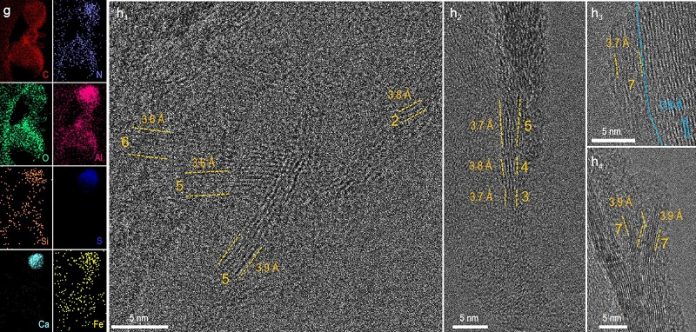
Researchers have made an exciting discovery in lunar soil: naturally formed graphene.
This wonder material, known for its thin, layered structure made of carbon atoms, was found in a sample brought back by China’s Chang’e 5 mission in 2020.
The study, published in National Science Review, was led by professors Meng Zou, Wei Zhang, and engineer Xiujuan Li from Jilin University, along with Wencai Ren from the Chinese Academy of Sciences’ Institute of Metal Research.
The team analyzed a small olive-shaped sample of lunar soil, measuring about 2.9 by 1.6 millimeters.
Scientists generally believe that around 1.9% of carbon in space is in the form of graphene, formed through specific processes that shape its unique structure.
Using a special spectrometer, the researchers found an iron compound in a carbon-rich part of the sample.
This compound is closely linked to the formation of graphene. Advanced microscopic and mapping techniques confirmed that the carbon in the sample consisted of “flakes” with two to seven layers of graphene.
The researchers suggest that this few-layer graphene might have formed during the moon’s early volcanic activity.
Solar winds could have stirred up the lunar soil and iron-containing minerals, helping transform the carbon atoms into graphene. Additionally, impacts from meteorites, which create high-temperature and high-pressure conditions, might have also played a role in its formation.
On Earth, graphene is a superstar in material sciences because of its exceptional optical, electrical, and mechanical properties. This discovery could lead to cheaper and more efficient ways to produce graphene, expanding its potential uses.
“The mineral-catalyzed formation of natural graphene sheds light on the development of low-cost scalable synthesis techniques of high-quality graphene,” the study stated. This finding could inspire new lunar exploration programs and pave the way for future breakthroughs.
This study not only provides insight into the moon’s geological history but also opens new possibilities for graphene production on Earth, potentially revolutionizing materials science and technology.
Source: KSR.



